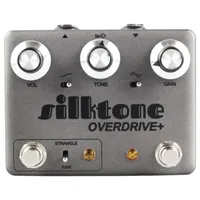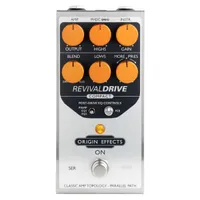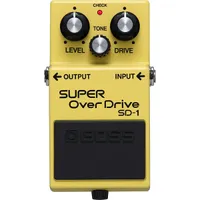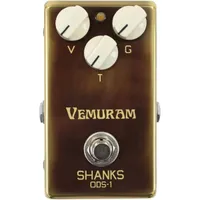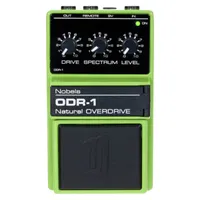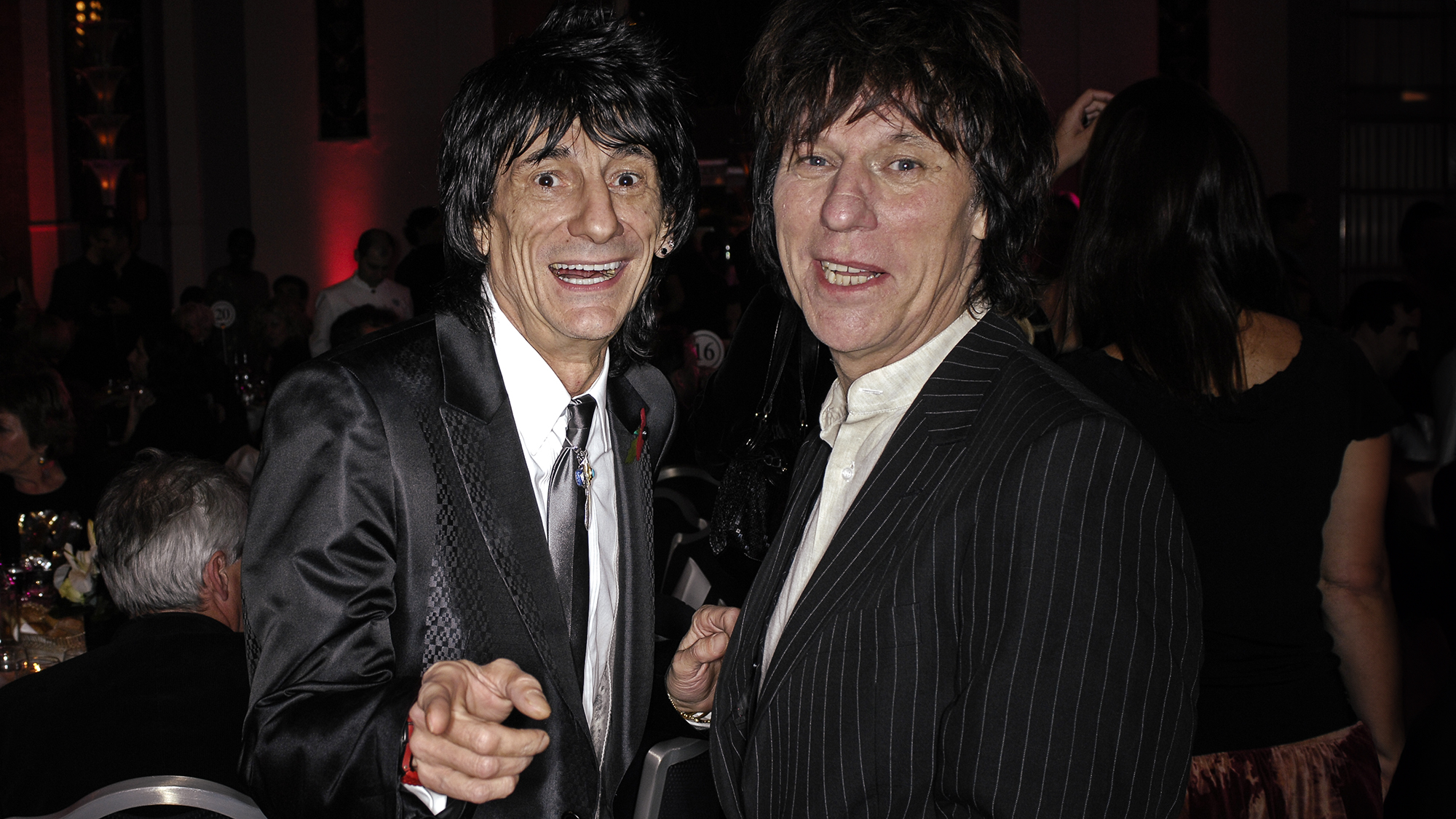Best overdrive pedals 2025: Saturate your guitar tone
Push your sound to break-up with the best OD pedals from Boss, TC Electronic, JHS, Ibanez and more
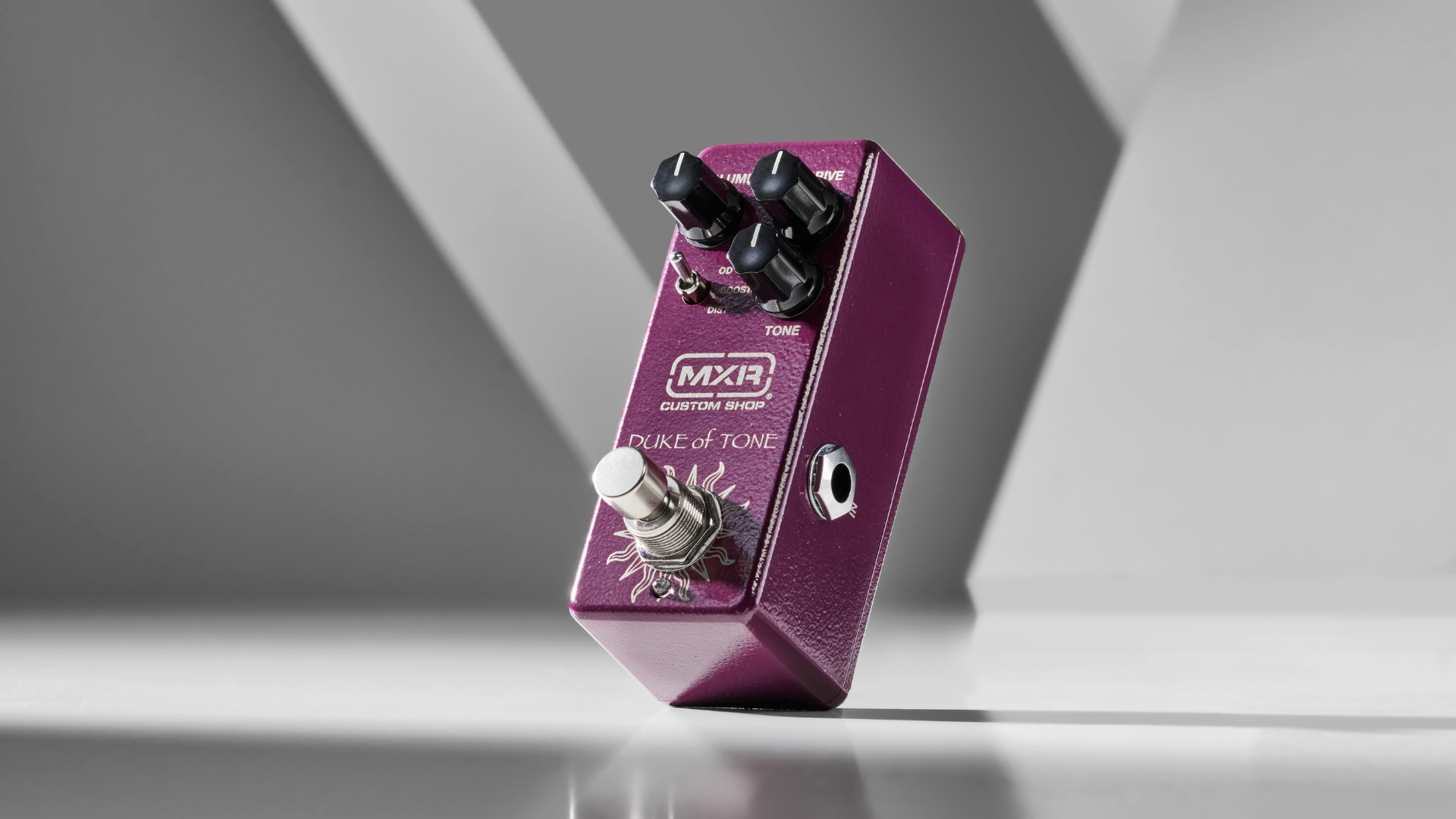
Whether you're chasing edge-of-breakup blues tones, gritty rhythm crunch, or full-bodied lead saturation, the best overdrive pedal for your preferred style is an essential purchase. From iconic mainstays like the Ibanez Tube Screamer and Boss SD-1 to modern tone machines from Wampler, JHS, and EarthQuaker Devices, the overdrive market is stacked with options. Luckily, we’ve sifted through them to bring you the very best.
I've used more overdrive pedals than I can remember over the last few decades of my playing career, and I've tried all of the icons and plenty of lesser-known options too. An overdrive pedal is a very personal thing to the player, so choosing one for your particular sound is often a process of experimentation.
It's for that reason that I've sorted the pedals in this guide by type, as an overdrive pedal can play a lot of different roles. OD pedals are also stackable, so you can run a bunch of them together to get differing levels of saturation. No matter which pedal you pick off this list, I don't doubt that all will serve you well, but as overdrive pedals are relatively cheap, it's definitely worth your time to try a few different ones and see what's out there.
For me, the Boss BD-2W Waza Craft overdrive is one of the best out there, and I've seen it used on all kinds of 'boards, from blues players to prog metal riffers. It stacks beautifully with other drive pedals, and reacts brilliantly to your playing dynamics. If you're after your first overdrive pedal, I recommend getting started with the budget-friendly TC Electronic Mojo Mojo with its flexible EQ and nice, transparent overdrive tones.
With all the different types and styles of overdrive that are on offer, it’s easy to get confused. To help make things easier for you, I've included a glossary of key terms for first-timers looking to get started with overdrive pedals. I've also curated an FAQs section if you want to learn more about overdrive pedals before buying.
Save big on guitar gear and stock up on essentials for less with our handpicked Black Friday guitar deals highlights.
My top picks
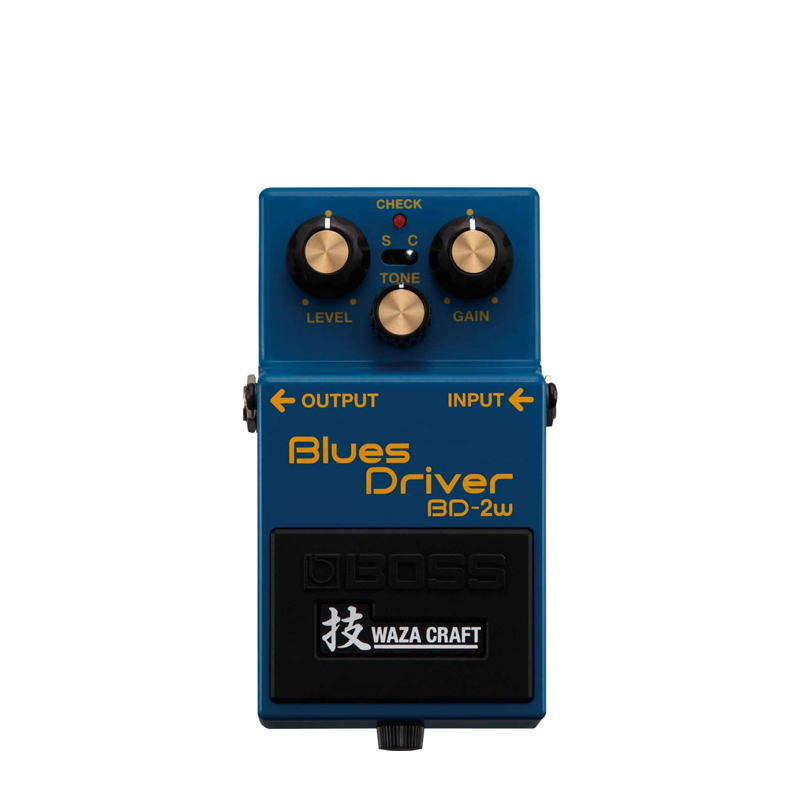
The Boss Blues Driver (BD-2) is a legendary overdrive, first released in 1995 and a pedal that just about every player should own. The experts at BOSS’s Waza Craft division have reworked and improved the classic drive to create the BD-2w – one of the very best overdrive pedals you can buy at any price.

The Klon is often considered the holy grail for ‘transparent’ overdrives, however getting your hands on one can set you back in the region of $5k+, which doesn’t make financial sense for most. Our recommendation is to invest in a Wampler Tumnus, a modern day Klon clone that won’t cost an arm and a leg, sounds just about identical to the original.
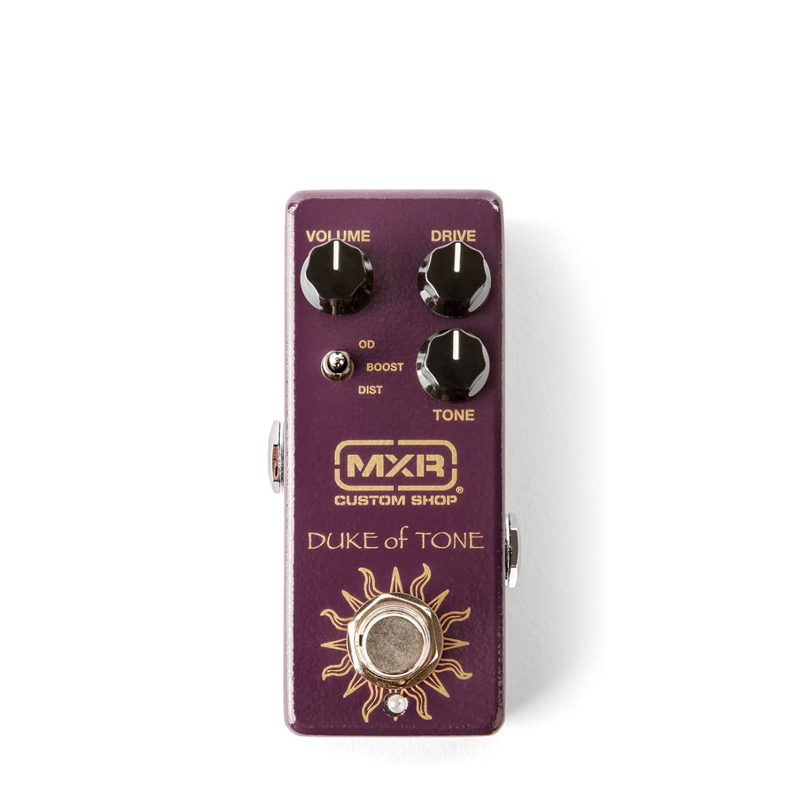
The MXR Duke of Tone is a mass-market remake of the legendary Analog Man Prince of Tone, designed in conjunction with Analog Man itself. If you do want a legitimate Prince of Tone, you’ll have to get in line and add your name to Analog Man’s five-year waiting list. Fortunately the Duke of Tone is readily available and sounds absolutely identical.
Best overall
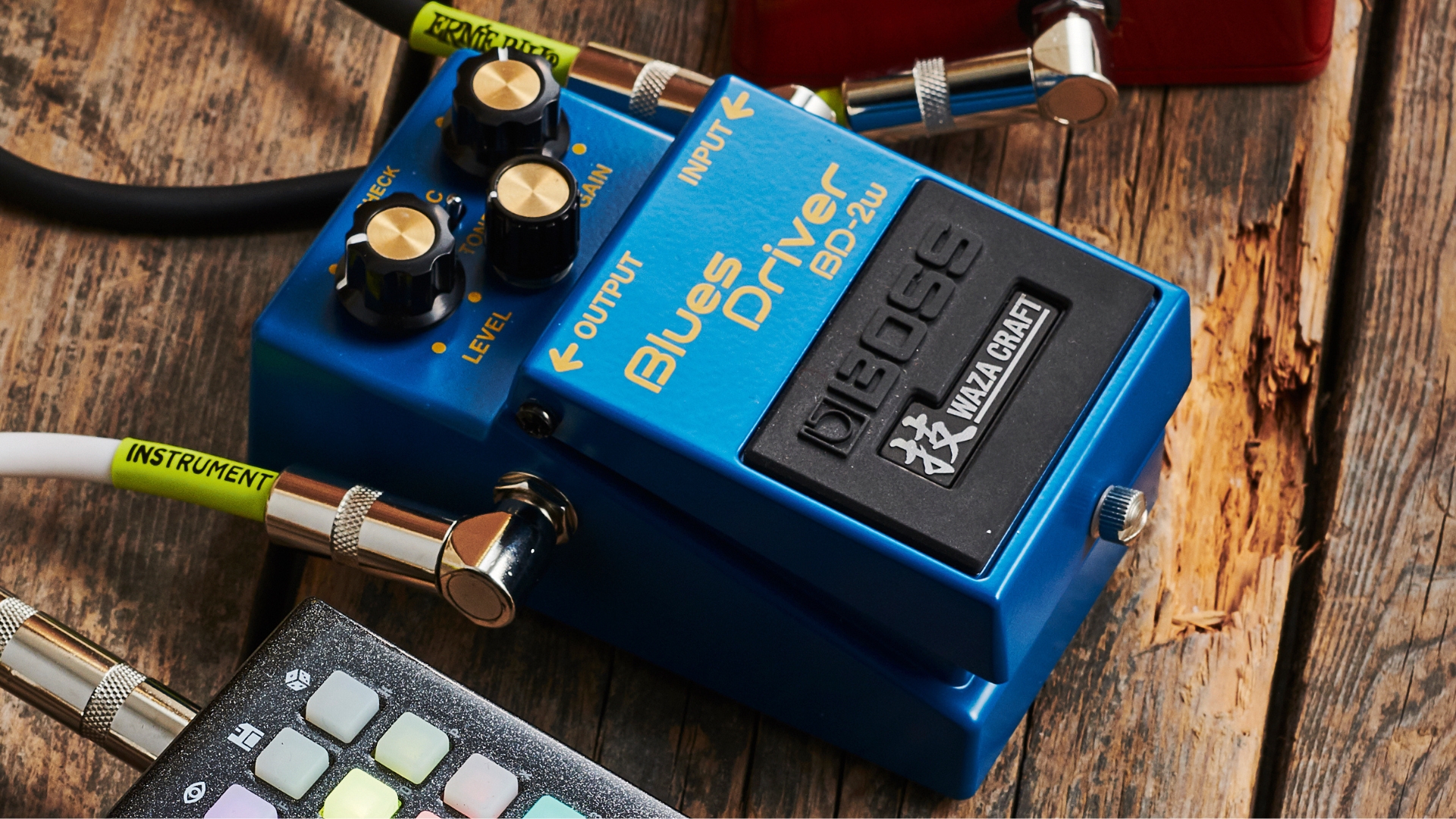
1. Boss BD-2W Waza Craft
Our expert review:
Specifications
Reasons to buy
Reasons to avoid
The BOSS Blues Driver BD-2 is a legendary overdrive and a pedal that just about every player should own. First released in 1995, the experts at BOSS’s Waza Craft division have reworked and improved the classic drive to create the BD-2w – one of the very best overdrive pedals you can buy at any price.
With all-analog circuitry, the BD-2W stays true to the classic Blues Driver sound while refining it in nearly every way. It’s quieter than the standard BD-2, feels more responsive under the fingers, and adds tonal flexibility via a switchable voicing mode. Roll back the gain for a touch-sensitive blues crunch, or push it for rich, saturated drive that suits heavier styles.
However, what really sets it apart is how well it responds to dynamics; dig in for bite and ease off for clarity. Pair it with a single-channel amp and a dual-volume controlled guitar, and you’ve got a powerful tool for switching between clean and driven tones with nothing but your fingers and your volume knob.
It is around double the price of its non-Waza sibling – and if you can’t stretch your budget to the Waza version, the standard Blues Driver is fantastic in its own right – but it still represents excellent value in the market, producing boutique-quality tones and feel at an accessible price point.
Best Klon clone
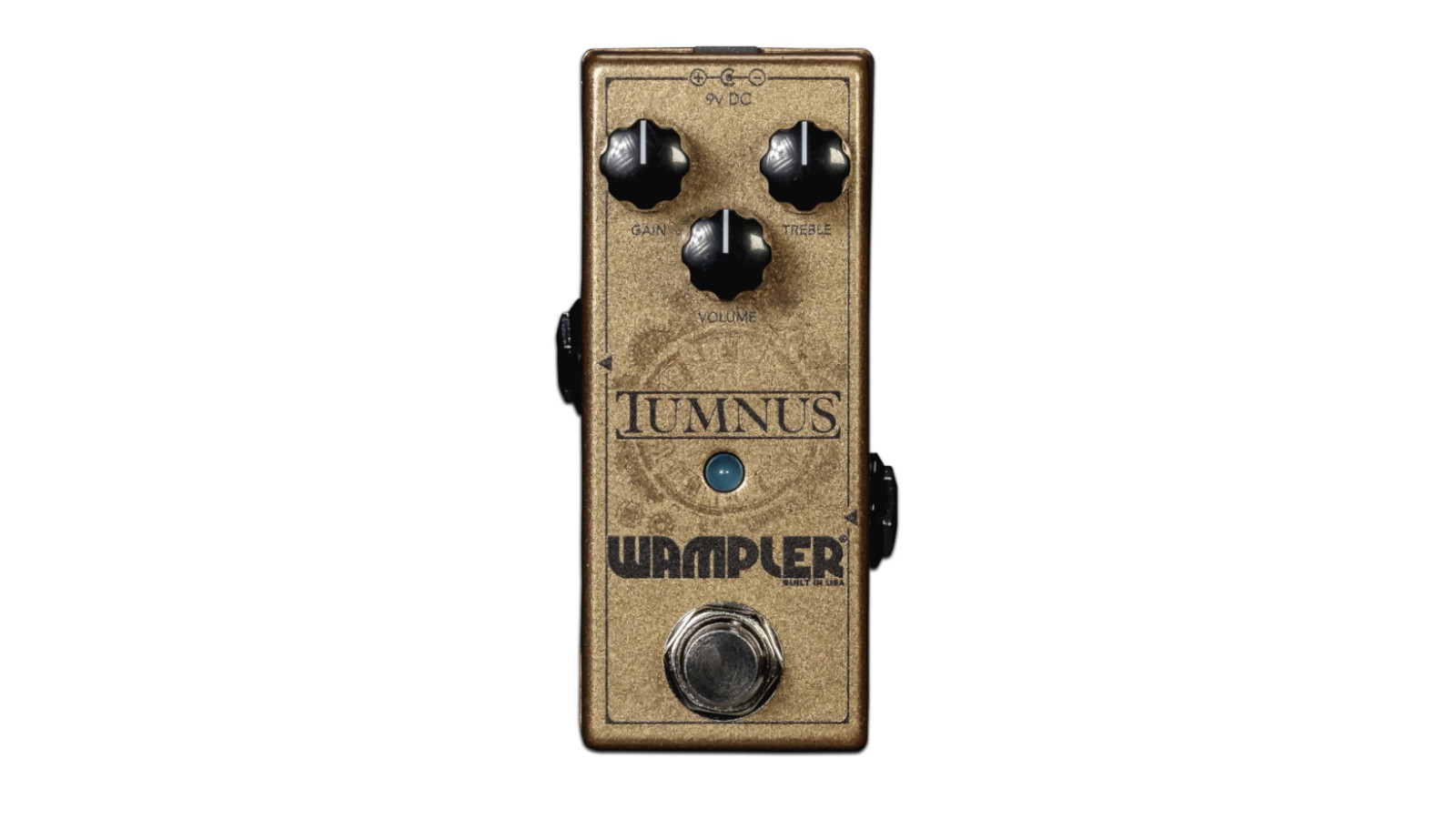
2. Wampler Tumnus
Our expert review:
Specifications
Reasons to buy
Reasons to avoid
The Klon is often considered the holy grail for ‘transparent’ overdrives, however getting your hands on one can set you back in the region of $5k+, which doesn’t make financial sense for most. Our recommendation is to invest in a Wampler Tumnus, a modern day Klon clone that won’t cost an arm and a leg, sounds just about identical to the original, and has a comparatively microscopic footprint on your pedalboard.
As a transparent overdrive, The Tumnus doesn’t drastically alter the EQ of your sound. When you kick it in, you get a gain boost that brings out those sought-after harmonics in your tone and produces plenty of luscious sustain that is perfect for solos. It’s not a one trick pony either – if your other pedals aren’t quite cutting it, try using the Tumnus in conjunction and it fattens them up and gives you a thicker, fuller drive tone.
If neither of those options float your boat but you want that additional harmonic richness to your tone, you can dial back the gain and use the Tumnus as an ‘always-on’ pedal, that simply makes everything sound better.
The team at Wampler has done its very best to accurately reproduce the magical quality of the original Klon, carefully and thoughtfully replicating the original circuitry – and they’ve done a more than admirable job. Bill Finnegan – manufacturer of the original Klon Centaur – doesn’t buy into the hype of spending thousands on his classic pedal and we’d argue that neither should you. Get a Tumnus instead.
Best Blues-Breaker

3. MXR Duke of Tone
Our expert review:
Specifications
Reasons to buy
Reasons to avoid
The MXR Duke of Tone is a mass-market remake of the legendary Analog Man Prince of Tone, designed in conjunction with Analog Man itself. If you do want a legitimate Prince of Tone, you’ll have to get in line and add your name to Analog Man’s five-year waiting list. Fortunately the Duke of Tone is readily available and sounds absolutely identical, and that’s because its circuit has been designed identically too, save for a few internal dip switches.
The Duke of Tone is essentially a ‘bluesbreaker’ style design, which adds warmth and provides a really strong backbone to your sound when engaged. With three modes, taking you from a pushed clean (in ‘Boost’ mode), to crunch (in ‘OD’ mode), to dirty (in ‘Distortion mode), the Duke of Tone is a pedal for those looking for versatility. It’s not as pronounced and bitey as some overdrives and the EQ curve of your sound should remain largely flat, but in every mode it is articulate, cuts through a mix, and has an excellent ability to react dynamically to your playing.
A really nice feature of the Duke of Tone is the ability to run it at either 9V or 18V, with the 18V mode providing an extra level of headroom, which is particularly pronounced in its ‘boost’ mode, and only adds to the pedal’s versatility. For those looking for something compact in size, but rich on tonal options, the Duke of Tone should be a serious consideration.
Best Tube Screamer
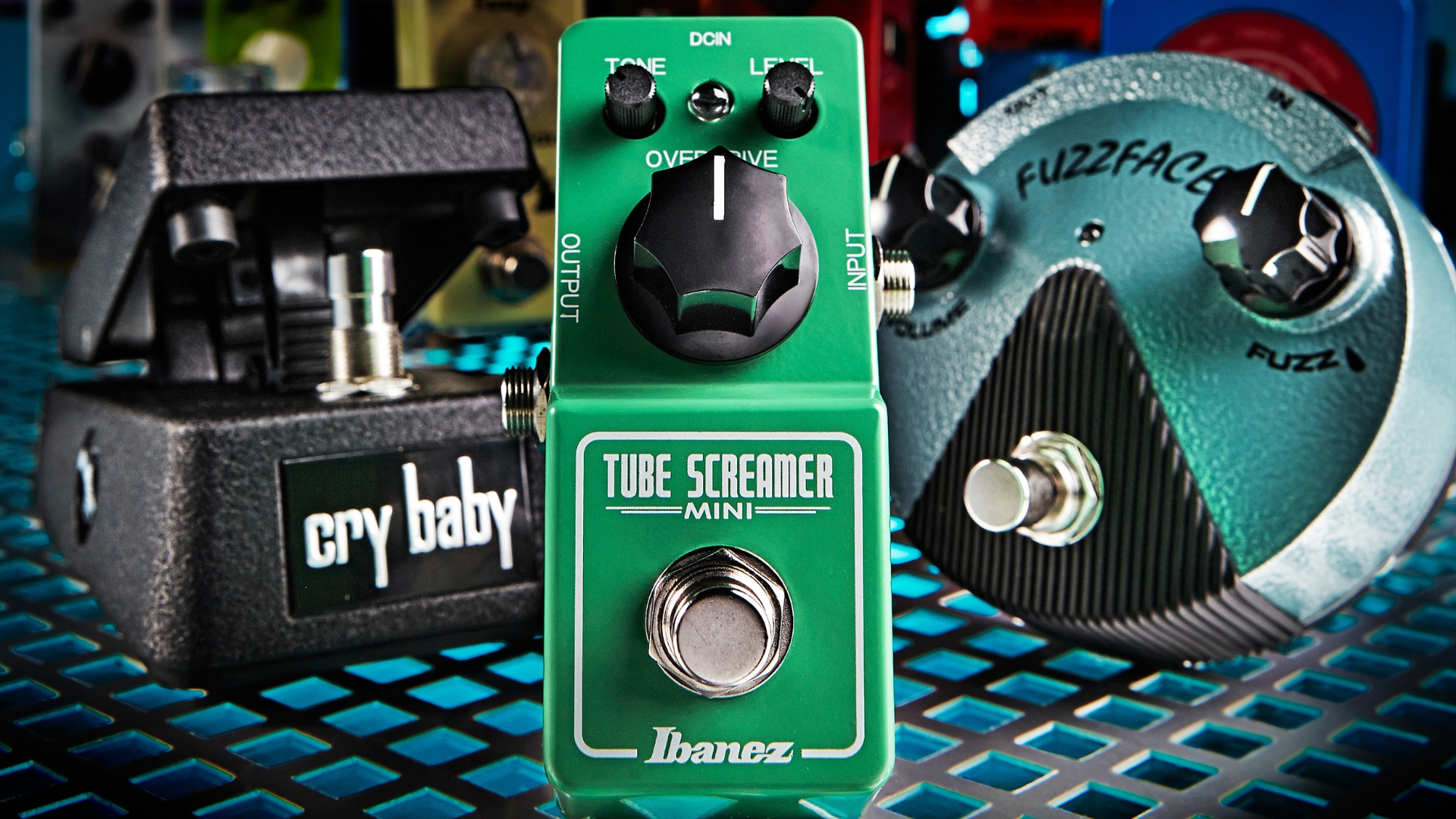
4 Ibanez Tube Screamer Mini
Our expert review:
Specifications
Reasons to buy
Reasons to avoid
You can debate all you want about which version of the Tube Screamer is the best, but in terms of value for money, the Tube Screamer Mini is the pick of the range. Despite its TS808 inspired design, internally the Tube Screamer Mini shares its components with the TS9… but in all honesty, that doesn’t matter – it does precisely what you’d hope any Tube Screamer would do.
As with all genuine Tube Screamers, there is a pronounced mid-push which works brilliantly with some amps – Fender tube amps for example – making it ideal for cutting through a busy mix. It is however worth stating that amps that have a lot of mids of their own – a Vox AC30 for example – may not work quite so seamlessly. Those looking for a pedal that can effortlessly push your tone into focus for lead sections should definitely give this a go, but it may not be an ideal fit depending on your amp.
With a mass of cheap Tube Screamer clones on the market, why settle for an imposter when you can have the real thing? The Tube Screamer Mini is among the first pedals every guitarist should own.
Best transparent overdrive
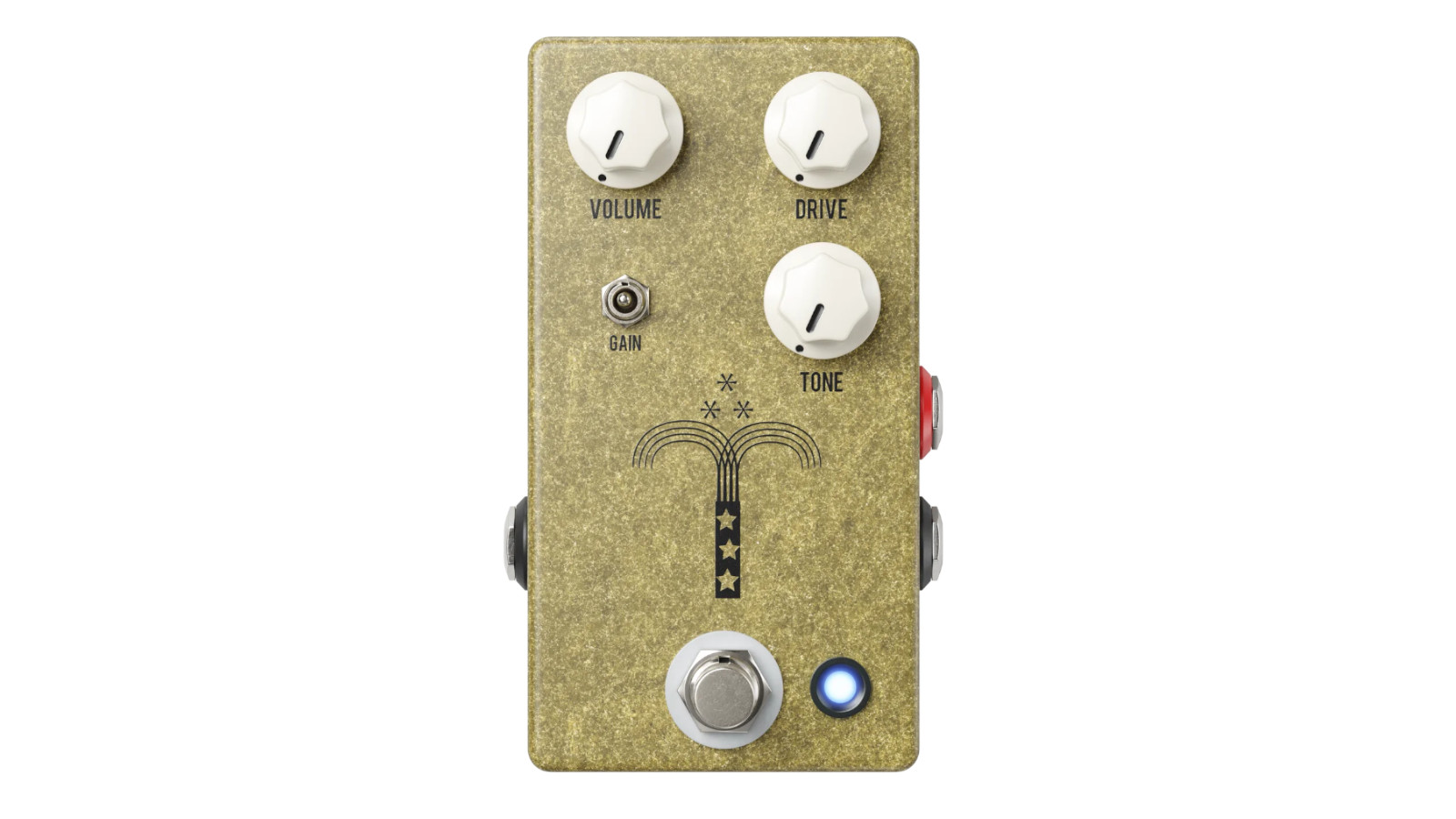
5. JHS Morning Glory
Our expert review:
Specifications
Reasons to buy
Reasons to avoid
The Morning Glory put JHS on the map and was one of the pedals that changed the concept of boutique manufacturers forever, and for good reason. Whilst some may look at it as yet another Bluesbreaker-style, transparent overdrive, the Morning Glory provides certifiably fat low end and crisp highs, that are unctuous and delightful to the ear. With tones to die for, it took boutique to the mainstream.
As a ‘transparent’ drive, it really amplifies the characteristics of your guitar and amp, so for those with a set-up they aren’t super happy with, the Morning Glory may only make you more dissatisfied. That being said, if you love your rig as it is, the Morning Glory is like the cherry on top of the cake, opening up a new dimension of sweet but subtle harmonic content that you wouldn’t have had before.
The Morning Glory is effortlessly simple, which is one of its endearing qualities, however if you want more tonal options, JHS’s ‘Double Barrel’ has two overdrives in one: the Morning Glory on one side, and their Moonshine – a more saturated overdrive – on the other. It’s a lot of fun, but (unsurprisingly) costs twice as much.
Best budget
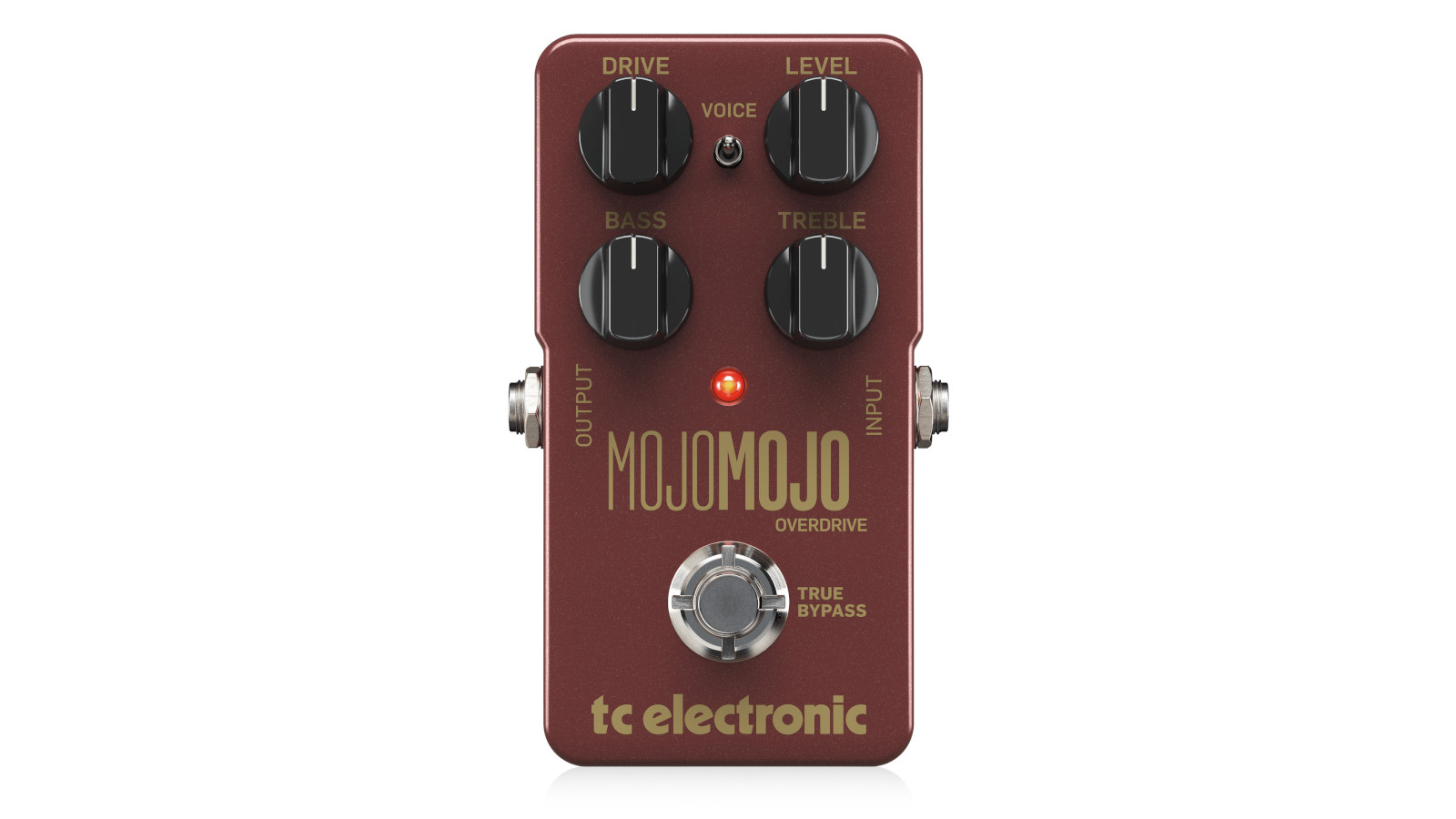
6. TC Electronic Mojo-Mojo
Our expert review:
Specifications
Reasons to buy
Reasons to avoid
The TC Electronic Mojo-Mojo is a natural, tube-style overdrive pedal that aims to reproduce vintage Tweed-style tones. For those looking for an extra gain stage in their effects chain, the Mojo-Mojo is an excellent addition as it doesn’t vastly color your tone. With all the controls in the 12 o’clock positions, the Mojo-Mojo gives you a nice transparent overdrive that works beautifully with your amplifier, allowing you to ramp up or down the drive knob to suit your needs. The bass and treble knobs do give you good control of the EQ though, so you can crank the highs and cut back the lows for soaring solos.
At one stage you could pick up a Mojo-Mojo pedal for next to nothing, but it quickly gained credibility (and grew in price) because of its use by the likes of Thurston Moore, Steve Lukather and Paul Gilbert – the latter of whom even has their own signature version. You may not get one for that super-low price anymore, however, at under $70 it’s still a really competitively priced pedal with tones that far exceed other pedals at this price point.
Also consider
For me, the pedals above are the ones you should be looking at. That said, I appreciate there's no one drive pedal to fit all, and that you might be looking to stack an existing overdrive pedal with something else, so here's some more great options for you.
Silktone Overdrive+
Versatile overdrive | Buffered bypass
The Silktone Overdrive+ might look like a throwback to the golden era of ’70s stompboxes, but under the hood it’s a completely original design. This all-analog circuit blends JFET and diode clipping with op-amp-driven headroom, delivering an expressive, full-bodied tone that reacts beautifully to playing dynamics. Whether you want tight, edge-of-breakup warmth or saturated lead tones, there’s a surprising amount of range on tap.
★★★★½
Origin Effects RevivalDRIVE Compact
Amp-in-a-box | Buffered bypass
The RevivalDRIVE Compact is an amp-in-a-box style overdrive pedal, which gives you tube-amp tones at your feet. This is derived from the genuine amp circuit topology hidden within the RevivalDRIVE that accurately recreates the signal path of a tube amplifier using solid state components. Unlike the original RevivalDRIVE, the compact version has only one channel, but this is still more than enough for just about any player and can take you from British to American amp tones in the turn of a couple of knobs.
★★★★½
Boss SD-1 Super Overdrive
Analog overdrive | Buffered bypass
One of the most famous and common overdrive pedals is also one of the best. It’s been around for years and has been designed to replicate the warm breakup associated with a cranked tube amp. There’s a lot of range within the gain on this too, so if you want something that has everything from subtle breakup to all-out chunky crunch, the legendary Boss SD-1 has you covered.
★★★★½
Vemuram Shanks ODS-1
Transparent | True bypass
Vemuram started appearing on professional pedalboards several years ago, which immediately piqued the interests of pedal enthusiasts… many of whom would have been given quite the shock when finding out their price. To get it out of the way, the biggest reason to avoid the Vemuram Shanks ODS-1 is the price; at over $400, it’s a lot of money for a single-function overdrive, but while the price point is wild, so is the tone.
★★★★☆
Nobels ODR-1 BC
Tube amp style | Buffered bypass
The Nobels ODR-1 is another stalwart in the overdrive market, having recently hit its 30th anniversary. Over that time, the ODR-1 has gone from cult hero to becoming a fan favorite. Self-described as a ‘natural overdrive’, the ODR-1 doesn’t have any aggressive boosts in its EQ, instead bringing your natural tone to the fore, with additional gain. This makes it ideal for players looking for a warm saturation and wanting to add guts to their sound.
★★★★☆
Key terms
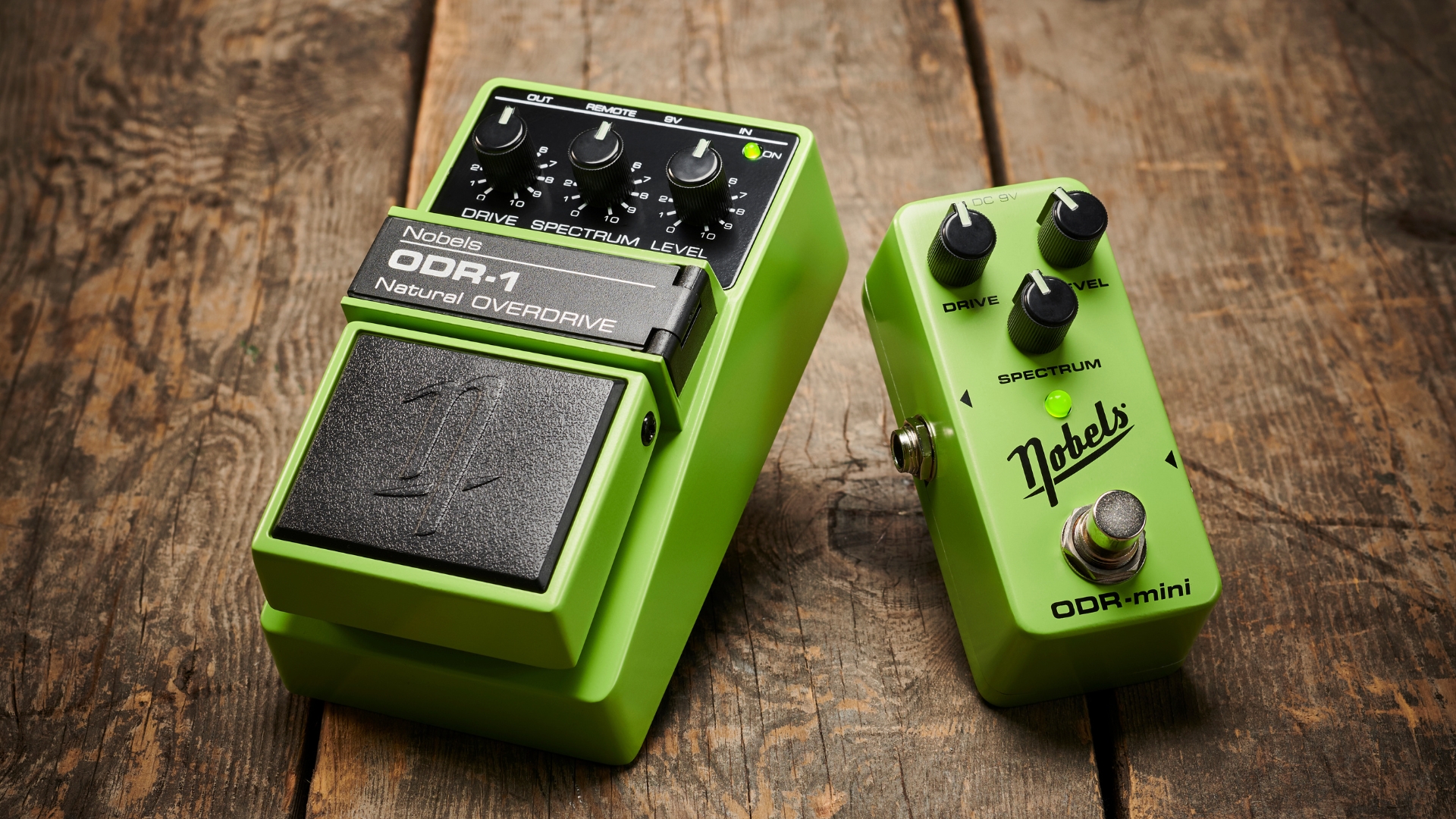
When shopping for an overdrive pedal you're going to come across a huge array of terminology you may not understand, so here's a breakdown of common buzzwords you're likely to come across:
Soft Clipping – A ‘gentle’ overdrive that is smoother and doesn’t cut off the top of your guitar’s sound waveform, helping retain a natural curve.
Hard Clipping – A more aggressive overdrive that uses diodes at the end of the circuit and affects your entire guitar signal. Used typically in harder rock settings, this will square off your waveform.
Transparent – An overdrive that doesn’t color your tone and works with your guitar and amp, without drastically changing the EQ.
Not Transparent – An overdrive that does make changes to the EQ of your sound, boosting specific frequencies, e.g. a mid boost.
True Bypass – A true bypass pedal allows the signal to pass through without any boosting. A great way to test this if you're not sure is to disconnect the power or battery and see if it still passes the signal. If it does, it's true bypass, if it doesn't it's a buffered pedal.
FAQs
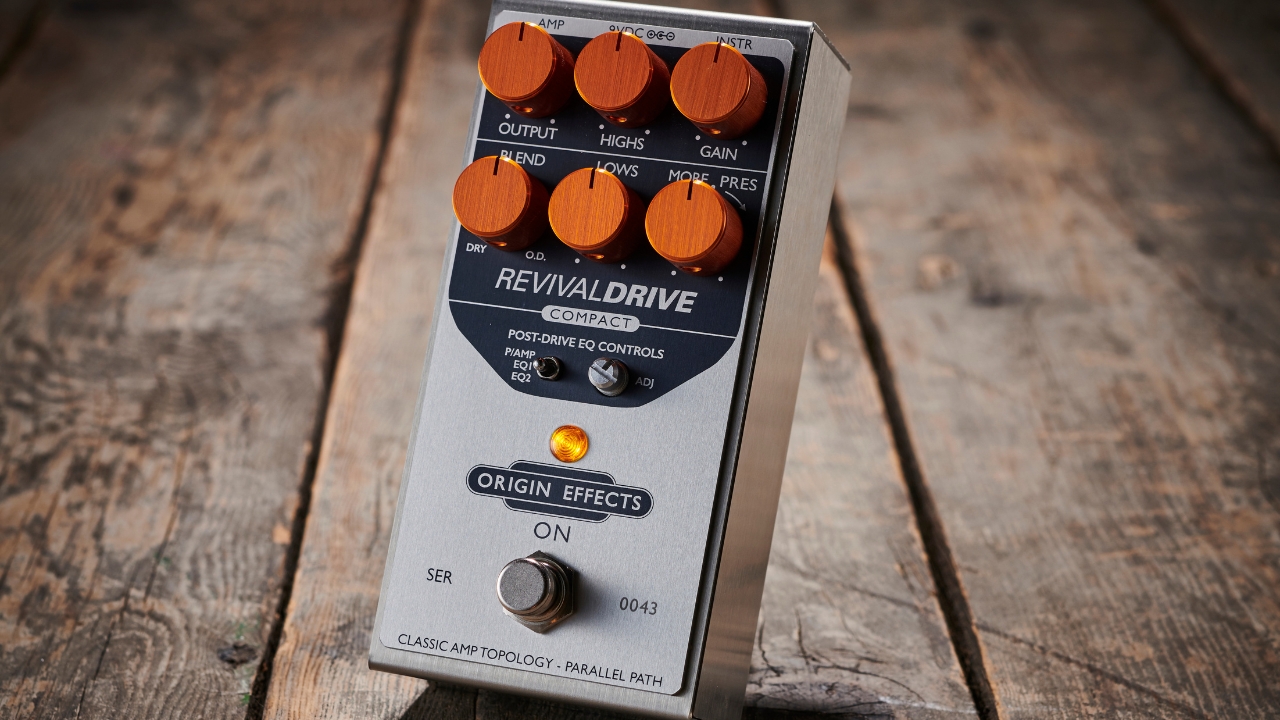
What is overdrive?
Overdrive is an effect that changes the signal of your guitar to mimic the sound of an old school tube amplifier running loudly and cascading into natural break up. It also works well if you have an existing tube amplifier, helping the amp to work harder and bring out its natural dirt. A good overdrive pedal should also offer the dynamic feel of a tube amplifier, reacting to how you play – harder offering more dirt, and softer retaining clean tones.
The vast majority of overdrives available on the market are lightly tweaked copies of existing circuits, with the most commonly copied being the Tubescreamer, but there are plenty of other designs that have multiple homages to them (Klon Centaur and Marshall Bluesbreaker, to name just two). Overdrive as a circuit tends to be relatively simple, using diodes and sometimes op-amps, though various overdrives will use variations to achieve their specific tone.
Which overdrive pedal is right for me?
Once you’ve understood what the different types of overdrive are, it becomes a little easier to understand which overdrive pedal would suit your existing set-up and the tone(s) you’re trying to achieve.
The Tube Screamer – arguably the most important overdrive pedal of all time – is not transparent and has a distinctive mid push, which works really well with Fender tube amplifiers, which tend to have a slightly scooped midrange; however a Vox AC30, with ample midrange of its own, won’t necessarily work quite so well. Alongside understanding the character of a specific overdrive pedal, make sure you know the character of your amplifier too as they have a symbiotic relationship when creating your drive tone.
Overdrive, distortion and even boost can sit fairly closely to each other in terms of effects, but make sure that if you specifically want an overdrive, then that’s what you get. Boost will raise your signal level, which could drive the preamp of your tube amplifier and achieve natural overdriven tones, however this is not achieved in quite the same way as an overdrive. A boost can also add a perceived volume increase due to the way it works your amplifier’s preamp, or a genuine volume boost if run into your amp’s effects loop.
Distortion on the other hand adds much more color to your signal, through harmonic saturation. This will typically create more sustain and be a more intense effect than overdrive, though similar results can be achieved.
If you think that you’d want a mix of these effects then they can complement each other. There are even a number of pedals that will have two modes, or two footswitches that have different functions, including combinations of overdrives, boosts, or distortions, for example, Fender’s Santa Ana overdrive, which features an integrated boost switch.
Should I have more than one overdrive?
This is quite an easy one. Yes. One overdrive may be enough for some, but there’s a really broad canvas of tonal options and most overdrives won’t be able to fill all of that, so the likelihood is that there is always room for a second overdrive on your pedalboard.
The other excellent thing that you can do with overdrive pedals is stack them, with one effect cascading into the other. This can result in entirely new tones that are perfect for lead sections, or heavier moments. Some manufacturers will even do this for you, for example JHS’s Double Barrel features the circuits of both its Morning Glory and Moonshine overdrives, which can be run in series, including flipping which order they are placed (either can be first or second).
What does a transparent overdrive pedal do?
The main differentiation between overdrive pedals is whether they are transparent or non-transparent, so let’s clear that terminology up. A transparent overdrive is designed to add gain and a touch of grit without drastically altering the core tone of your guitar and amp. Think of it as pushing your rig harder rather than coloring it. These pedals typically maintain your EQ profile and dynamics, making them great for stacking or edge-of-breakup tones.
On the other hand, non-transparent overdrives impose more of their own sonic character, often boosting mids, tightening bass, or adding compression. A Tube Screamer is a classic example: it shapes your sound as much as it drives it. Neither is better than the other, and ultimately, you may prefer one or the other or even have a combination of multiple options on your pedalboard. We believe that understanding the difference helps you choose the right tool for your tone.
How we test
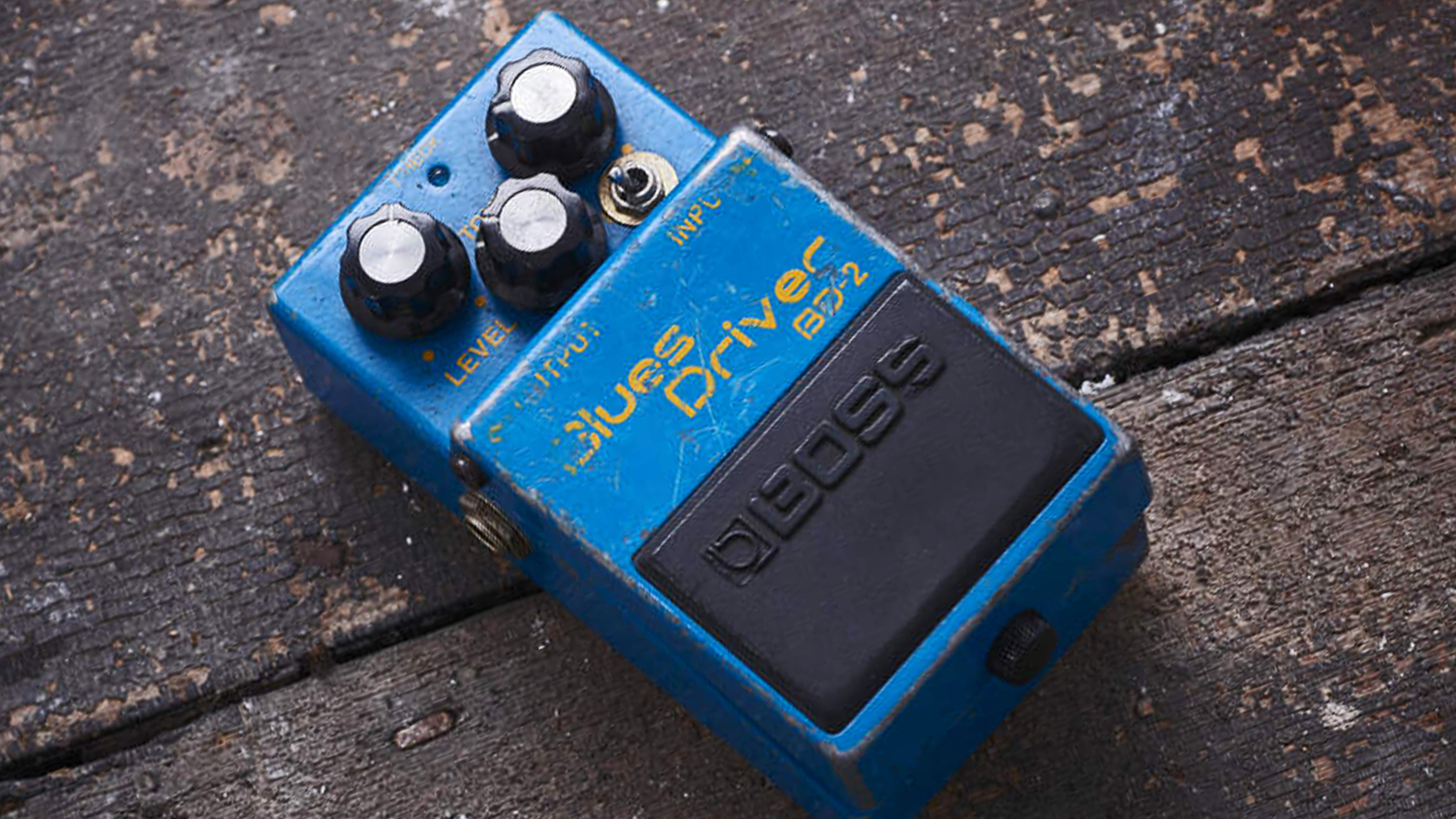
At Guitar Player, our team of writers aren't just music enthusiasts; we're real-life musicians. Our hands-on experience with overdrive pedals ensures that our reviews and recommendations are backed by practical knowledge and real-world testing.
When it comes to selecting the best overdrive pedals, we leave no stone unturned. Meticulously evaluating factors like tonal versatility, sonic character, build quality, and value for money, it's only after rigorous testing in a variety of playing scenarios do we choose products for our guides.
We test overdrive pedals in a variety of scenarios, whether that's with single coils, P90s, or humbuckers, stacking it with other overdrive pedals, and trying a variety of amplifiers including tube and modeling amps. This allows us to get a great overview of what the pedal is capable of, thus enabling us to recommend it for a particular purpose.
We'll also be sure to check over the construction of the pedal to ensure it is rigid and open it up to take a look at the circuitry inside. This ensures we can fully understand the pedal and its capabilities, as well as what it's likely to be like in everyday use.
We stand by our selections, ensuring that every guitar pedal we recommend is one we'd use ourselves. Read more on how we test gear and service at Guitar Player.
Related buyer's guides
You can trust Guitar Player.
- Plug in with one of the best guitar cables
- Freshen up your tone with the best electric guitar strings
- Nail the tone for cheaper with the best guitar amps under $500
- Want an affordable amp? Well, here are the best guitar amps under $1,000
All the latest guitar news, interviews, lessons, reviews, deals and more, direct to your inbox!
- Ross Holder
- Matt McCrackenJunior Deals Writer
- Richard Blenkinsop
